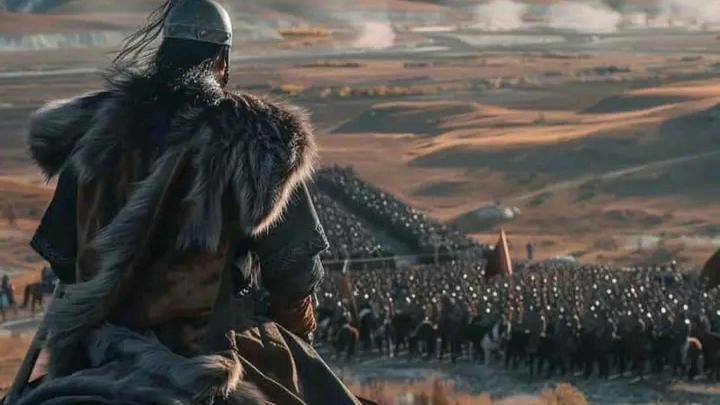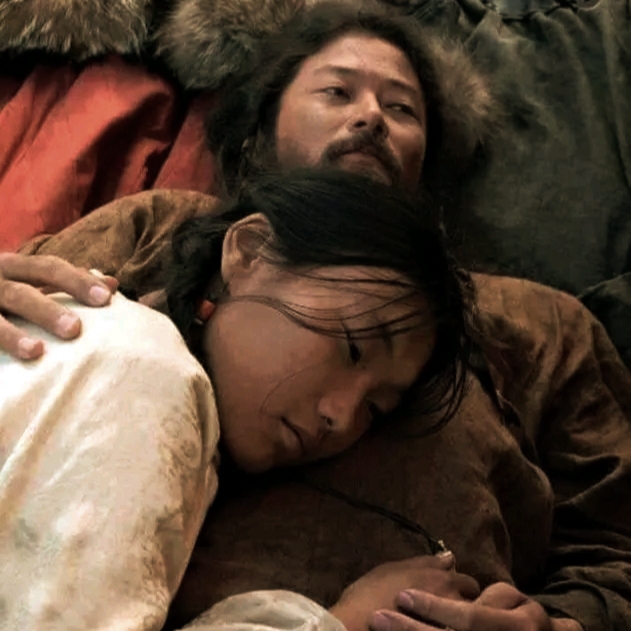Who Was Mongolian Cengiz Kagan??

Cengiz Kagan: The Rise of the Mongol Empire and the Fall of Khwarezm
Cengiz Kagan, better known in the West as Genghis Khan, is one of the most significant figures in world history. His leadership in the establishment of the Mongol Empire, the largest contiguous empire in history, and the brutal conquests he orchestrated shaped the geopolitical landscape of Eurasia for centuries. The fall of the Khwarezmian Empire, a major Islamic state in Central Asia, is an episode that particularly highlights his military genius and the destructive force he wielded.
The Early Life of Cengiz Kagan (Genghis Khan)
Cengiz Kagan was born as Temujin around 1162 in the steppes of Mongolia. His early life was marked by hardship, betrayal, and survival. His father, Yesügei, was a prominent leader of the Mongol tribe, the Borjigin, but was poisoned by an enemy tribe when Temujin was just a child. Left to fend for themselves, Temujin’s family struggled to survive, living in poverty and isolation. However, his resilience and ability to adapt to the harsh environment of the Mongolian steppes were qualities that would define his future leadership.
Temujin’s rise to power was gradual but decisive. Over time, he gained followers through his reputation as a warrior and leader, initially uniting the scattered Mongol tribes. His charisma, military prowess, and strategic genius helped him form alliances and build a base of power. In 1206, Temujin was declared Cengiz Kagan, meaning “universal ruler,” a title that marked the beginning of his empire-building efforts.

The Formation of the Mongol Empire
Cengiz Kagan’s leadership was rooted in a number of innovative reforms that consolidated the Mongol tribes into a single, highly disciplined and efficient fighting force. He introduced a merit-based system of promotions, encouraging loyalty and respect among his soldiers, and reorganized his army into highly effective units known as “tumen,” each consisting of 10,000 soldiers. Cengiz Kagan’s army was noted for its speed, discipline, and strategic coordination, which were key to the Mongol victories.
His military innovations, such as the use of cavalry, archery, and psychological warfare, allowed the Mongols to defeat much larger and better-equipped enemies. Cengiz Kagan’s early campaigns were successful, and he expanded his control over a vast region, including parts of Central Asia, China, and the Iranian plateau. The Mongol Empire, under his leadership, rapidly became a dominant force in the world.
The Khwarezmian Empire: A Prosperous Kingdom
At the height of Cengiz Kagan’s power, the Khwarezmian Empire, located to the west of his Mongol homeland, was a prosperous state. The Khwarezmian Empire, which stretched from the Caspian Sea in the west to the steppes of Central Asia, was ruled by Shah Ala ad-Din Muhammad, whose capital was the city of Samarkand. The Khwarezmians were known for their flourishing cities, advanced trade routes, and cultural achievements, making them one of the most influential empires in the Islamic world at the time.
The empire was an important player in the Silk Road trade network and had a significant influence on the political and cultural developments of the region. However, the leadership of the Khwarezmian Empire was plagued by internal division, corruption, and overconfidence.
The Conflict with the Khwarezmian Empire
The conflict between Cengiz Kagan and the Khwarezmian Empire began with a diplomatic incident. In 1218, Cengiz Kagan sent a trade caravan to the Khwarezmian Empire to establish commercial relations. The caravan, however, was seized by the governor of the city of Otrar, who accused the Mongol merchants of espionage. In retaliation, Cengiz Kagan sent a diplomatic mission to the Shah, offering a peaceful resolution and requesting the release of the caravan.
The Shah’s response was disastrous. He not only executed the Mongol diplomats but also sent a military force to destroy the Mongol caravan and its remaining traders. This event infuriated Cengiz Kagan, who saw it as a direct insult and violation of diplomatic protocol. Despite initial attempts at peace, the Shah’s arrogance and refusal to negotiate would prove fatal for the Khwarezmian Empire.
The Mongol Invasion of the Khwarezmian Empire
Cengiz Kagan was not a leader known for forgiving insults, and the destruction of the Mongol caravan and the execution of his diplomats were acts that he could not let slide. In 1219, he launched a full-scale invasion of the Khwarezmian Empire. The Mongols quickly advanced toward the heart of the empire, with their armies moving in coordinated waves, striking swiftly and decisively. Their speed and efficiency overwhelmed the Khwarezmian forces, who were caught off guard by the sheer ferocity of the Mongol assault.
The Mongols besieged and captured several important cities, including Samarkand, Bukhara, and Nishapur. Each city fell after devastating Mongol sieges, which involved both psychological warfare and the use of overwhelming force. Cengiz Kagan’s forces systematically destroyed Khwarezmian cities, killing large numbers of civilians, soldiers, and even prisoners of war. The Mongols showed no mercy in their conquest, and the Khwarezmians, unprepared for the Mongol onslaught, were swiftly defeated.
One of the most notorious events during the Mongol invasion of the Khwarezmian Empire was the siege of Bukhara. According to historical accounts, when Cengiz Kagan entered the city, he is said to have remarked, “I am the punishment of God. If you had not committed great sins, God would not have sent a punishment like me upon you.” This statement reflects the brutal, almost divine sense of retribution that Cengiz Kagan felt during his conquests.
The Fall of the Khwarezmian Empire
The fall of the Khwarezmian Empire was swift and brutal. After Cengiz Kagan’s forces captured the major cities, the Shah fled westward, leaving his empire in ruins. The Mongols continued their pursuit of the Shah, who eventually died in exile, but by then the damage had been done. The Khwarezmian Empire, once a prosperous and powerful state, was dismantled, its cities reduced to rubble, and its people scattered or slaughtered.
Cengiz Kagan’s invasion of the Khwarezmian Empire was one of the most destructive military campaigns in history, with tens of thousands of people killed. The empire’s fall marked the end of a significant Islamic power in the region and opened the door for further Mongol expansion westward.
The Legacy of Cengiz Kagan
The Mongol invasion of the Khwarezmian Empire is often cited as a pivotal moment in the rise of the Mongol Empire. It showcased the military genius of Cengiz Kagan and the terrifying effectiveness of his army. The destruction of the Khwarezmian Empire also served as a warning to other states in the region about the Mongols’ ability to decimate even the most powerful of adversaries.
However, the Mongol Empire, under Cengiz Kagan, did not solely rely on destruction. In the aftermath of his conquests, Cengiz Kagan sought to integrate the vast territories he had captured. He encouraged trade, the exchange of ideas, and the establishment of a stable administrative system across his empire. The Silk Road flourished under Mongol rule, facilitating cultural exchange between East and West.
Cengiz Kagan’s death in 1227 marked the end of an era, but his descendants, particularly his grandsons Hulagu Khan and Kublai Khan, continued his work of empire-building, further expanding Mongol influence across Asia and Europe. The Mongol Empire, though it would eventually fragment, left a lasting legacy on the world stage.
In conclusion, Cengiz Kagan’s military conquest of the Khwarezmian Empire serves as a powerful testament to his vision of unifying the Mongol tribes and expanding his empire through strategic brilliance and ruthless action. The destruction of the Khwarezmian Empire remains one of the most defining moments in the history of the Mongol Empire, illustrating the unstoppable force that Cengiz Kagan became in his relentless pursuit of power.


